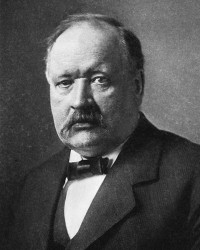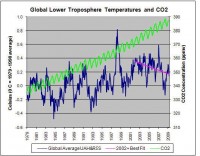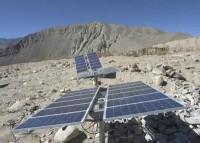Obama Gives Green Light to Canadian Oil Sands
Climatico, 21 June 2009
President Obama, in close discussions with Energy Secretary Stephen Chu and Alberta Premier Ed Stelmach is to give the green light for US consumption of oil sand oil, or rather the import of fuels considered among the “dirtiest” in the fuel market. In a meeting last week, President Obama decided that the Canada’s oil sands represented an important part of national security supplies for petroleum in America’s near future.

The move is not without immediate precedent, as Francois Cardinal at cybercress.ca notes, both Hillary Clinton had offered support for oil sands at a recent conference on energy security, and Obama’s national Security adviser General Jim Jones was similarly adamant that the US would be foolish to reject the possibility of a stable source from a close partner in Canada.
The move will disappoint many in the green movement, given Obama has previously been less supportive of oil sands, noting that the Us needed to ween itself off dirty and dangerous oil supplies.
FULL STORY here.
Britain Green Suicide Note: 5,000 Pound Power
By Louise Barnett, Consumer Editor
ENERGY bills will hit a shocking 5,000 UK pounds a year to strike a blow to millions of struggling families, experts warned last night. Consumer champions said the massive sum was a “wake-up call”, marking the end of cheap electricity and gas.
Bills will rise by up to 42 per cent ayear over the next decade - with the biggest single increase an eye-watering 1,280 pounds. But they said this will be boosted by a yearly 548 pounds to help overhaul the UK’s out-of-date energy supply system. And they warned that the huge rise would stretch household budgets to breaking point and dump hundreds of thousands more people into fuel poverty. Experts at uSwitch.com said that average annual bills have more than doubled from 580 pounds five years ago to 1,243 pounds today.
Over the next decade customers will suffer even steeper price rises with fees quadrupling by 2020, they warn. Investment in outdated infrastructure and new green energy policies will drive bills higher.
FULL STORY here.
Russia Offers 30% CO2 Emissions Increase by 2020
By Simon Shuster, Reuters
Russia plans to release 30 percent more greenhouse gases by 2020 under an emissions target scheme announced on Friday by President Dmitry Medvedev. The plan would reduce emissions by 10-15 percent from Russia’s emissions in 1990 when it was part of the Soviet Union and its emissions were far higher than they are today. This angered environmentalists, and the target also is likely to fall short of expectations from developing countries.
“It’s not enough, it’s very low,” said Alexey Kokorin, the Russia spokesman for environmental protection group WWF. Medvedev’s announcement was interpreted as an opening shot in United Nations negotiations meant to seal a new climate treaty in December to replace the Kyoto Protocol. Under those talks, rich nations are meant to propose mid-term emissions targets. Russia is the last major country to do so.
Green groups and developing countries want industrialized countries to trim their emissions by 25-40 percent below 1990 levels, referring to a range of cuts suggested by a U.N. panel of climate scientists. “Based on the current situation by 2020 we could cut emissions by about 10-15 percent,” Medvedev told Russian state television, according to a copy of his comments supplied by the Kremlin. Arkady Dvorkovich, the Kremlin’s chief economic adviser, later clarified to Interfax news agency that the reduction would be from 1990 levels, before the Soviet Union fell and Russia’s heavy industry collapsed.
Since then, its carbon emissions have returned to an upward curve along with its industrial revival, preserving Russia’s place as the world’s third largest polluter behind China and the United States. The target laid out on Friday meant cumulative cuts of 30 billion tonnes of greenhouse gases from 1990 to 2020, Medvedev said. This implies Russia will emit about 3 billion tonnes of greenhouse gas in 2020 compared with 2.2 billion tonnes in 2007.
“We will not cut off our development potential,” Medvedev said. Under Kyoto, Russia has to return its emissions to 1990 levels by 2008-12. Green groups and developing countries were disappointed last week by Japan’s proposals for a 2020 target barely stiffer than its Kyoto Protocol goal, and were again downbeat on Friday after Russia’s announcement. Medvedev said Russia would take a responsible approach to greenhouse gas emissions but expected other countries to follow suit.
“We expect our partners to take reciprocal steps. That is why I have said many times—the problem of climate change has to be addressed by everyone or not at all,” he said. Dvorkovich later added that Russia must find “the right balance” between addressing climate change and reaching Russia’s goals for economic growth, Interfax reported. Experts saw the goal laid out on Friday as a first shot in six months of intense talks meant to culminate in a new climate pact in Copenhagen this year.
FULL STORY here.
Thanks to Dr. Benny Peiser, CCNet. To subsribe to newslatter, send an e-mail to listserver@ljmu.ac.uk ("subscribe CCNetMedia").
By Norm Kalmanovitch
The single greatest failure of science is what philosophers call “appeal to authority”, whereby the stature of a person allows statements made by that person to be taken as absolute fact when such statements are only opinions based on perception and have never been verified. The IPCC models are based on the assumptions of Arrhenius and use an artificially contrived “CO2 forcing parameter” based on the Arrhenius supposition relating 0.6C of observed warming directly to a 100ppmv increase in atmospheric concentration. Not only does this parameter ignore quantum physics in its construction, it relates the entire 0.6C of warming directly to CO2 increases without subtracting the 0.5C of natural warming since the Little Ice Age; essentially creating a parameter for the effect of CO2 that is six times too large. When Arrhenius developed his theories about the effect of CO2 on the global temperature he did not have the benefit of Quantum Physics to define the process, and falsely assumed an incorrect relationship.

Svante Arrhenius: 1859-1927
The entire climate change issue is nothing more than compounded “appeal to authority”. First Hansen used the authority of Arrhenius, then the IPCC used the authority of Hansen, then Gore used the authority of the IPCC, and now Chu has also used the authority of the IPCC and completely ignores his own fundamental knowledge that won him the Nobel Prize for Physics (ironically for investigations into a similar process). This is where the “appeal to authority” has to stop, because the President does not have the background to even question Chu about the validity of this conjecture.
There is irrefutable data that clearly demonstrates that the world has been cooling since 2002, even as CO2 emissions continue to rise as demonstrated by this graph of raw monthly global temperature data and atmospheric CO2 data. Also present on this graph is clear indication that the atmospheric concentration of CO2 showed no reversal from 1979 to 1982 even though there was a reduction in CO2 emissions over this time period as a result of conservation efforts because of the skyrocketing oil prices of the time.
At the 2006 IPCC Climate Conference in Nairobi, this graph was presented to demonstrate the need for drastic action to reduce CO2 emissions. What this graph does show, is that the IPCC base their projections on emissions under the false assumption that concentration increases are directly and primarily due to emissions from fossil fuels. This is clearly and demonstrably false because the reversal in emissions from 1979 to 1982 shown on this graph is not present on graphs of atmospheric CO2 concentration over this same time frame, indicating that increases in emissions are not the primary or even a significant source for the increase in atmospheric CO2 concentration.
The following graph is the annual averaged CO2 concentration. Notice that there is no reversal in concentration at the point where the curve crosses the grid line for 1980 where the emissions curve shows a reversal.

See large image here.
There is absolute and irrefutable proof that the Earth is cooling in spite of the continued increase in atmospheric CO2 falsifying the conjecture that increasing CO2 is the dominant driver of global warming. There is absolute and irrefutable proof that CO2 emissions are not a major contributor to the increase in the concentration of atmospheric CO2, and therefore have no measurable effect on climate, even if there was a significant effect from CO2.
As a scientist of Nobel Prize winning stature, by “appealing to authority”, Steven Chu has committed a serious breach of science protocol. In light of this evidence and more importantly because of the position of trust that Chu holds with the President, it is imperative that Chu ignore all the dogma and rhetoric and go back to his basic knowledge of quantum physics and expose this sham for what it is, and properly advise the president on this issue. Read full analysis of which this was just an excerpt here.
By Todd Woody, New York Times Business
When a company called Ausra filed plans for a big solar power plant in California, it was deluged with demands from a union group that it study the effect on creatures like the short-nosed kangaroo rat and the ferruginous hawk. By contrast, when a competitor, BrightSource Energy, filed plans for an even bigger solar plant that would affect the imperiled desert tortoise, the same union group, California Unions for Reliable Energy, raised no complaint. Instead, it urged regulators to approve the project as quickly as possible.

One big difference between the projects - Ausra had rejected demands that it use only union workers to build its solar farm, while BrightSource pledged to hire labor-friendly contractors. As California moves to license dozens of huge solar power plants to meet the state’s renewable energy goals, some developers contend they are being pressured to sign agreements pledging to use union labor. If they refuse, they say, they can count on the union group to demand costly environmental studies and deliver hostile testimony at public hearings.
If they commit at the outset to use union labor, they say, the environmental objections never materialize. “This does stress the limits of credibility to some extent,” a California energy commissioner, Jeffrey Byron, said at one contentious hearing, “when an attorney representing a labor union is so focused on the potential impact of a solar power plant on birds.”
Union leaders acknowledge that they make aggressive use of the environmental laws, but say they do it out of genuine concern for the sustainability of California’s power industry, not just as a negotiating tactic. And they contend they do not abandon valid environmental objections to a project just because a company signs a labor agreement. “We’ve been tarred and feathered more than once on this issue,” said Marc Joseph, a lawyer for California Unions for Reliable Energy. “We don’t walk away from environmental issues.”
At proposed fossil-fuel power plants, the union group has long been accused of exploiting environmental laws to force companies into signing labor agreements. The tactic is a subject of perennial discussion in the California legislature, which has considered, but never passed, bills to strip labor of its right to participate in environmental assessments. What is new is that California Unions for Reliable Energy, a coalition of construction unions, appears to be applying this approach to new-age renewable energy projects, especially solar power plants, which are being fast-tracked to help meet the state’s green power target.
Lawyers for the union both negotiate labor agreements with solar developers and participate in the environmental review of the projects. California Unions for Reliable Energy insists it is pursuing the long-term interests of its members. If energy projects are held to high environmental standards, the group says, more of them will ultimately get built, and that will mean more union jobs. Nationwide, as billions of dollars in public and private investment flow to renewable energy projects, the environmental and labor battles being fought in California could prove to be the opening skirmishes of a larger fight over the emerging green economy.
What is new is that California Unions for Reliable Energy, a coalition of construction unions, appears to be applying this approach to new-age renewable energy projects, especially solar power plants, which are being fast-tracked to help meet the state’s green power target.
Lawyers for the union both negotiate labor agreements with solar developers and participate in the environmental review of the projects. California Unions for Reliable Energy insists it is pursuing the long-term interests of its members. If energy projects are held to high environmental standards, the group says, more of them will ultimately get built, and that will mean more union jobs.
Nationwide, as billions of dollars in public and private investment flow to renewable energy projects, the environmental and labor battles being fought in California could prove to be the opening skirmishes of a larger fight over the emerging green economy. Read more here.


